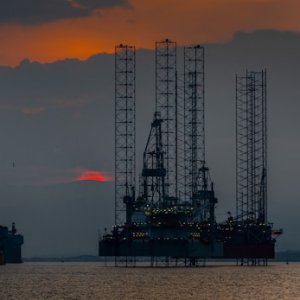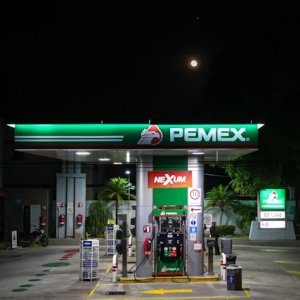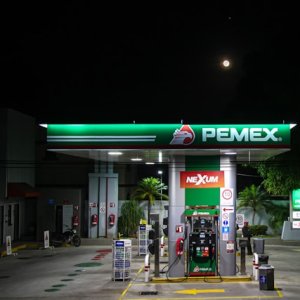Exploration Activity Surpassing Limits, Boundaries

STORY INLINE POST
Q: What were some of your most important experiences as CNH regulator in the midst of the challenges in 2020?
A: We were able to maintain normal functioning within our role and responsibilities as a regulator, given the circumstances, and when we consider that we cannot assume an authorship role over Mexico’s hydrocarbon policy. We are institutionally mandated to follow SENER’s decisions, and in that sense, we have been successful. Evaluations and permitting have continued normally. While SENER continues to mediate PEMEX’s exploration and production plans, our responsibilities remain the same. Permitting needs have increased during the pandemic, and there has been a tremendous amount of activity for all upstream operators throughout this difficult time. The drilling of wells and the execution of assorted exploration and development tasks has increased. The authorization of new superficial exploration studies, in the geological, geophysical and geochemical categories, has increased in the past two years despite the global circumstances. Special agreements had to be reached with all operators so that delivery dates could be delayed due to the pandemic. We expected onshore exploration to be the area most affected in terms of delays, but the impact was more generalized at the end of the day.
Q: What were the key success factors that defined the increase in discoveries during the pandemic?
A: It is important to note that exploration activities were an important part of the overall agenda in the years before the pandemic, and this gave us a solid base to continue our successes throughout 2020 and 2021. If we go back to 2019, around 101 exploration plans were approved that year. Twelve appraisal programs were also approved. In this case, an appraisal program is comprised of studies that appraise the reservoir and are focused on delimiting the well and its resources. In 2020, 66 exploration plans and 10 evaluation plans were approved. So far in 2021, 22 exploration plans have been approved, including modifications to previously approved plans, plus seven approved appraisal programs. This means that between 2019 and this year, we have approved a total of 189 exploration plans and 29 appraisal programs. This is an industry that has simply not stopped working throughout this time. The discoveries that defined 2020 and 2021 cannot be understood outside of the context of all previously approved exploration plans, which speaks to the importance of our industry as an ongoing process.
Exploration plans included the drilling of 29 deepwater wells, which focused mostly on private operators. A total of 81 shallow water wells are to be drilled as part of these plans, 56 of which came from PEMEX entitlement areas and 25 came from contractual areas with private operators. Additionally, 140 onshore wells are also to be drilled as part of these exploration plans, 72 of which came from PEMEX entitlement areas and 68 that came from contractual areas with private operators.
We need to consider the question of how many of these wells have actually been drilled. In 2019, 147 total wells were authorized to be drilled. 53 of those were drilled in 2019, 56 in 2020 and 38 in 2021 so far. This shows that despite operational delays, the industry has continued to work to fulfill its goals and has generated an immense amount of activity as a result. Fourteen deepwater wells have been drilled already, representing significant investments, all of them drilled by private operators.
PEMEX, despite its limitations, has drilled 40 shallow water wells and 40 onshore wells, while private operators have drilled 11 shallow water wells and 42 onshore wells. Throughout this drilling, the rate of exploration success has been quite astonishing: our average is at 54 percent. This figure is incredibly high when you consider that the global average for deepwater activities, for example, is around 30 percent, which is already considered significantly high. In Mexico, we are looking at an average drilling success rate for deepwater activities of 56 percent. If we distribute that average between PEMEX and private operators, PEMEX has an average drilling success rate in shallow water, its main area of expertise, of 62 percent, while private operators are maintaining an average of 44 percent. In onshore wells, PEMEX’s average is at 50 percent while private operators’ average is at 60 percent.
Q: To what degree can the exploration be translated into more efficient development and production plans?
A: Certainly the fluctuations in the price of oil have had a great impact in our evaluation criteria and in the criteria applied by all regulated entities. At US$70 or even US$60 per barrel, most of these exploration activities still make sense.
We also need to consider the incoming energy transition, which has to be balanced with the degree of untapped hydrocarbon resources that still remain to be exploited in Mexico, which include a significant degree of deepwater and unconventional resources. Meanwhile, other flagship fields that we have relied on for too long have become very mature. This points to the need for an integrated strategy in which oil price fluctuations are only one of several factors taken into consideration when it comes to shaping the future of Mexico’s oil and gas industry.
Several political questions would need to be addressed before that approach can be taken. Fifty-seven percent of Mexico’s 112.9 billion boe of prospective hydrocarbon resources, which represent 64.2 billion boe, are in the unconventional category, but no amount of potential richness will uncover that potential if there is a political mandate not to allow unconventional development and production in the first place. These political questions would have to be considered in our integrated model. Meanwhile, of the remaining 43 percent of conventional resources in Mexico’s prospective hydrocarbon resources, between 48 and 49 percent is located in deepwater. Most deepwater resources were not assigned or tendered during the previous bidding rounds. Therefore, our energy policy would need to address that. Most of our unconventional resources are focused on the Tampico-Misantla region, with a general distribution across the states of Veracruz, Tamaulipas, San Luis Potosi, Hidalgo and Puebla. Fifteen new areas were assigned to PEMEX in this region recently but the NOC will not be focusing on the available unconventional resources.
When we ask ourselves where our oil and gas will come from in the future, the current political agenda would seem to suggest that our efforts will be directed toward conventional resources in shallow waters and onshore areas, despite the great richness of deepwater and unconventional resources we possess. This is not necessarily a misdirected strategy if we consider that fossil fuels are supposed to be globally phased out to some significant degree by 2050. Mexico’s energy matrix is too heavily focused on hydrocarbon resources. Natural gas could be our bridge to the energy transition but that would also require a strategic plan for natural gas asset development in all categories, in addition to the infrastructure development that we would require to become self-sufficient in this regard. A plan for natural gas extraction would need to consider unconventional resources. The degree to which we change course in anticipation of the energy transition is not a question that is entirely in our hands, either. For example, Equinor’s recent exit from Mexico illustrates the degree to which the country will also be affected by the energy transition plans of other governments, IOCs and NOCs that could develop assets within our territory.
Q: How should PEMEX drill the wells to correctly delimit its claim over the Zama reservoir?
A: The well that PEMEX was planning on drilling near the disputed boundary, which did not appear in its latest evaluation plan, needs to be drilled to settle these disagreements. This means that a well that is close to a boundary would arguably address the geological characteristics present on both sides of such boundary. This type of well can significantly reduce uncertainty when it comes to determining the percentage distribution between two operators in a transboundary reservoir such as Zama. I have a great deal of experience in these types of agreements, since I spent many years working on the GOM hydrocarbon resource transboundary agreement between the US and Mexico, which was defined by similar strategies. The path forward is to reduce uncertainty as much as possible. This also reduces the likelihood of negotiations being interrupted by the further intervention of third parties. The agreement should be ideally reached by Talos and PEMEX, and no one else, although in this case it is SENER that will have the final say on the matter.
Q: What do you expect the future value of Mexican geological information will be and what will be the CNH’s role as an arbiter and authority regarding that data?
A: Mexico is the biggest beneficiary in how that value has evolved. Three years ago, the country that gathered the most information concerning its hydrocarbon regions was Mexico. This included the acquisition of new geological, geophysical and geochemical data. As a result, this created an enormous collective benefit, despite the fact that a large degree of it was gathered by private companies, thanks in part to the industry’s regulatory structure through which this information comes through the CNH. Sharing this information with us is one of the most important commitments that private companies operating in Mexico make. We expect to continue to play a significant role in the management of this information, thanks to the centrality granted to us by the industry’s legal framework.
Alma América Porres has broad experience in geophysics and the technical aspects of the oil and gas industry. She was first appointed Commissioner at CNH in 2010. Her current term runs 2016-2022.








 By Pedro Alcalá | Senior Journalist & Industry Analyst -
Tue, 07/13/2021 - 12:22
By Pedro Alcalá | Senior Journalist & Industry Analyst -
Tue, 07/13/2021 - 12:22
















